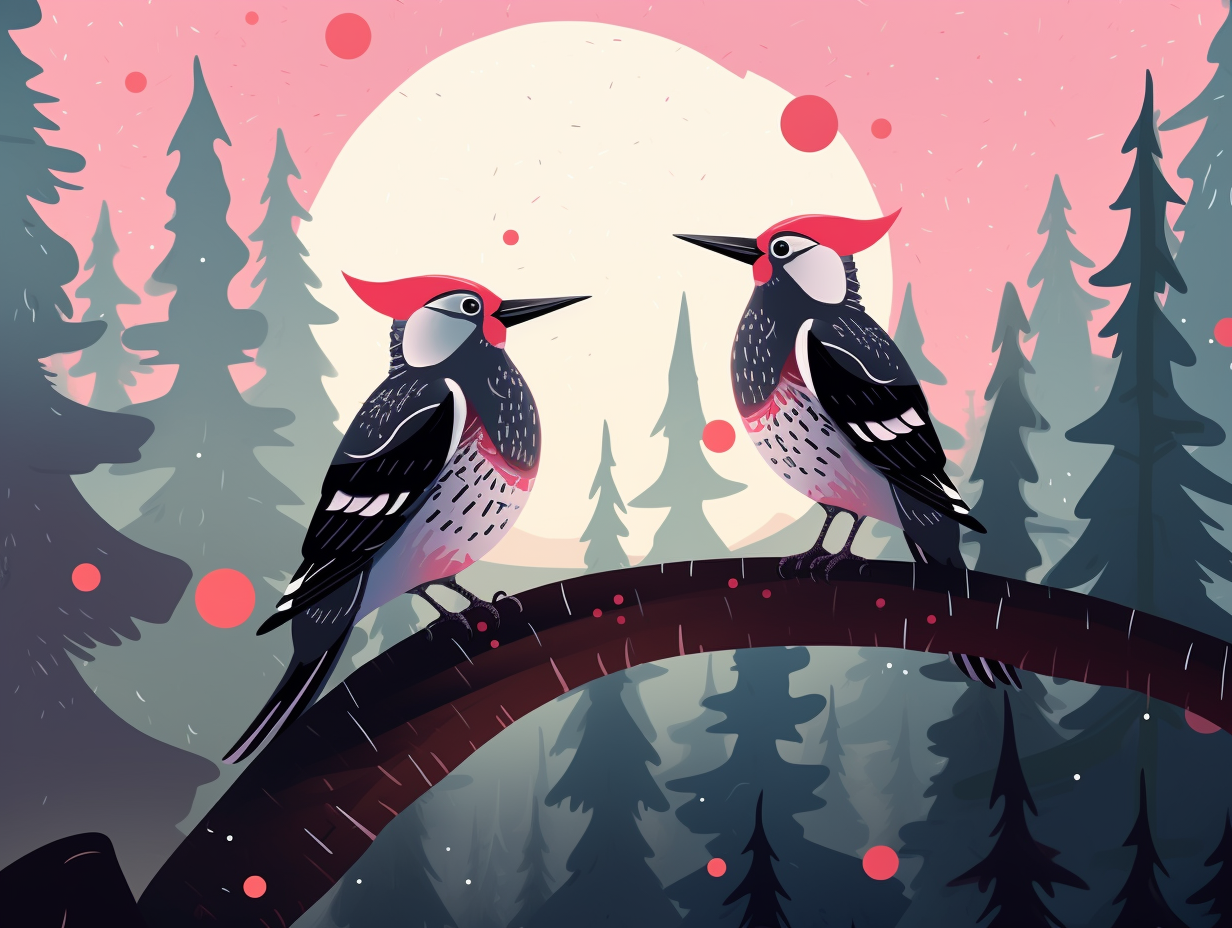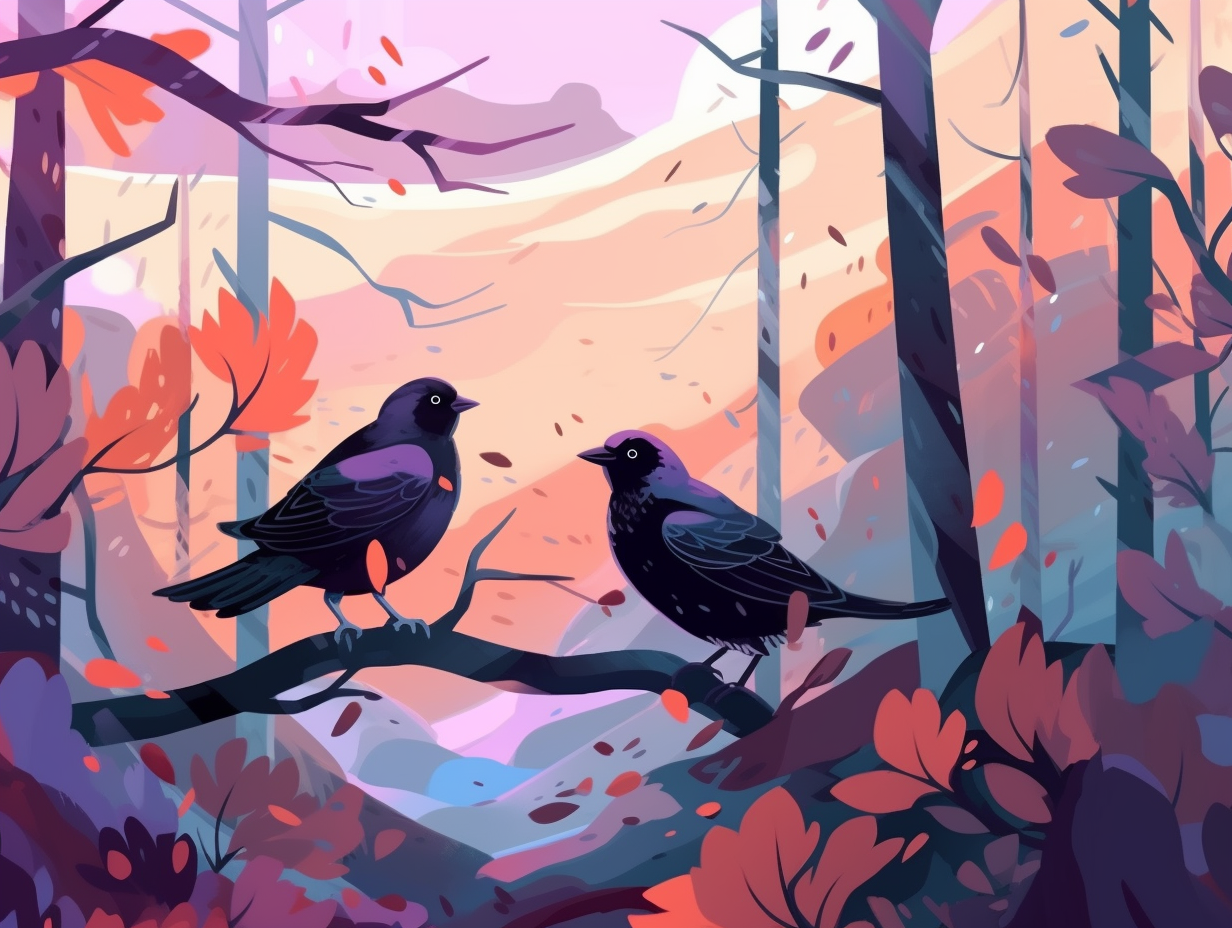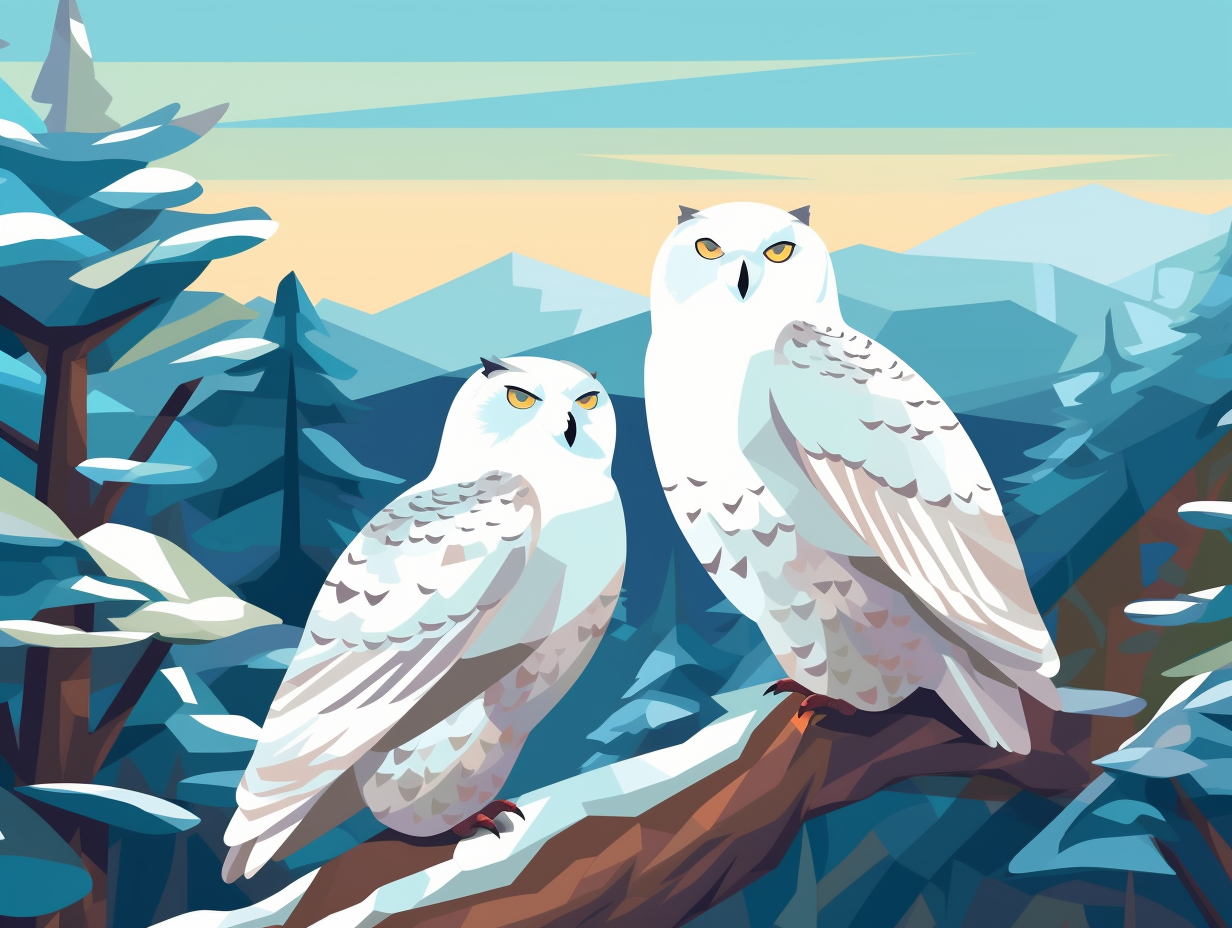Discover the Avian World: Top 26 Fun and Fascinating Facts About Birds You Need to Know!
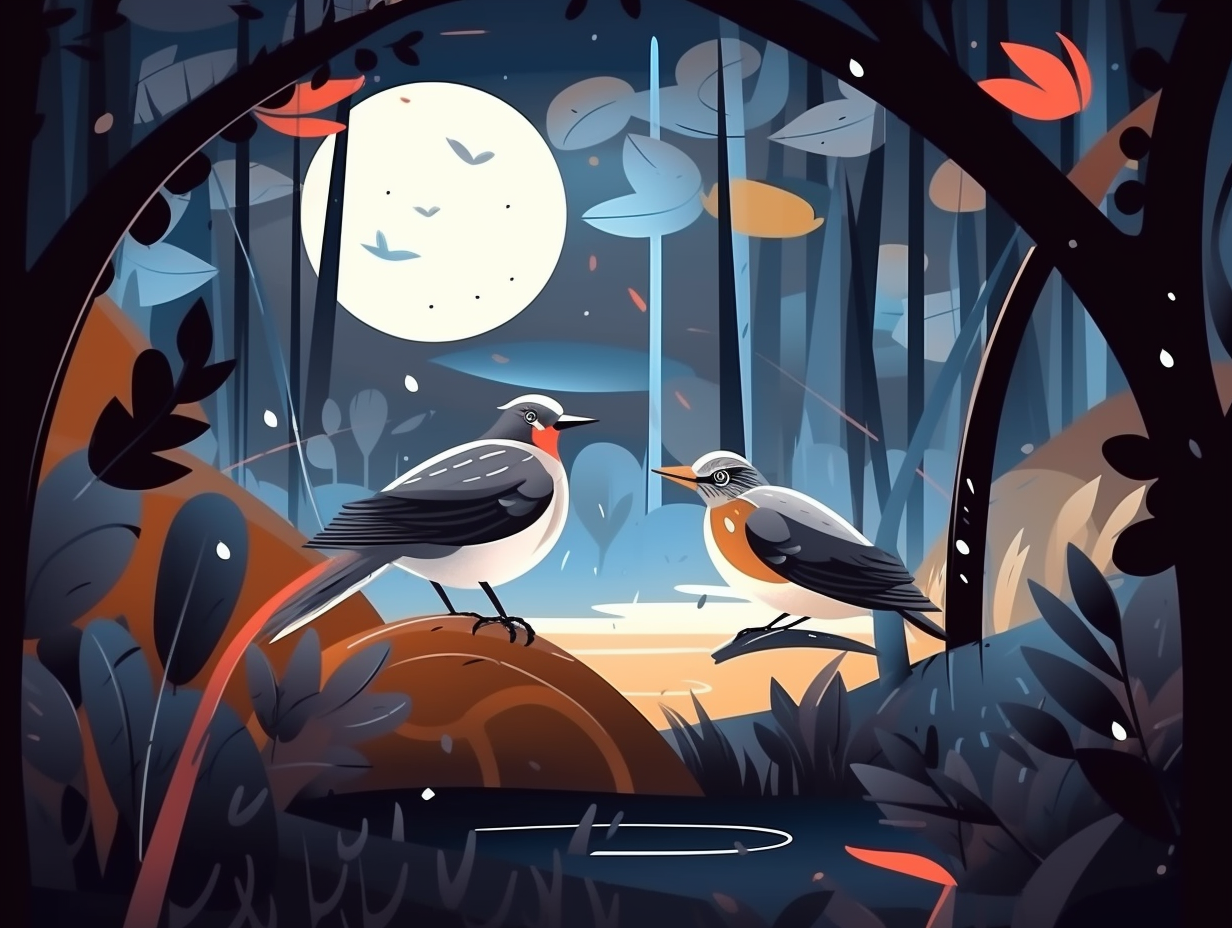
1. Crows Remember Human Faces
Watch out for those beady-eyed gossips! You know, the ones in the crow world that won't let you live down that time you scared their buddy: Crows have an exceptional memory for human faces and can recognize individuals they perceive as threats, even passing along that knowledge to future generations. This phenomenon was proven in a study wherein crows scolded humans wearing a 'dangerous' mask long after initial encounters with masked, trapping researchers.
Source => nathab.com
2. Magpies Can Recognize Themselves
Mirror, mirror, on the wall, who's the smartest bird of all? It might just be a magpie after a rumble with a pigeon: The Eurasian magpie has demonstrated an ability to pass the mirror test, indicating self-awareness; however, they're not alone in the bird world, as pigeons have also managed to pass a modified version of the test with extensive training, making bird-brains a compliment in this context.
Source => en.wikipedia.org

Did you know that hummingbirds can reach flight speeds of up to 90 feet per second during courtship dives, making them the fastest flying bird relative to their size? Be amazed by their incredible wing-flapping rates and more! 💨🐦✨
=> Fun Facts about Hummingbirds
3. Arctic Terns' Social Summer Vacay
These Arctic Terns must have taken advice from the Beatles because they sure like to "come together": Arctic Terns are social birds that not only forage in groups but also nest in colonies on the ground, flaunting their black caps, short red legs, and red bills on their annual summer vacation along the north Atlantic shore from New England north.
Source => allaboutbirds.org
4. Pelicans: Three-Gallon Gulpers
Ever thought being a pelican could make you a winner at "who can gulp the most"? Well, it certainly would: A pelican's pouch has the ability to hold up to three gallons of fish and water, which is a whopping three times more than what its stomach can accommodate, making it a master at catching and carrying a smorgasbord of fish for later consumption or safekeeping in its esophagus.
Source => animals.howstuffworks.com
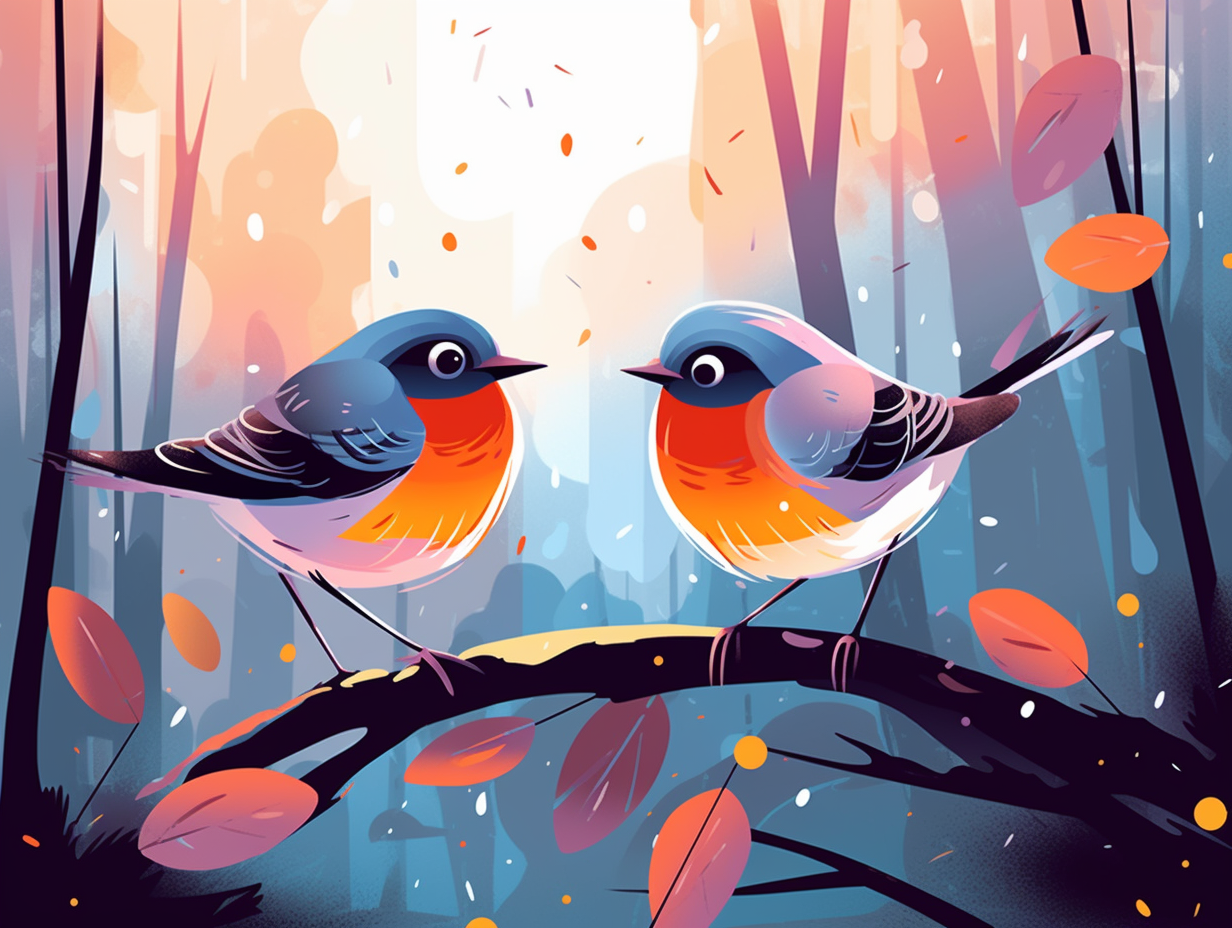
5. High-Altitude Flamingo Flyers
In a surprising twist that would leave even Superman intimidated, flamingos are found soaring in high altitudes with their pink capes fluttering: These graceful avian superheroes not only fly at staggering heights to elude eagle-villains during the day, but can also cover impressive distances at night with a remarkable speed of 50 to 60 kilometers per hour when it's time to migrate.
Source => seaworld.org
6. Kiwis: Flightless Detectives
Sherlock Holmes, eat your heart out: kiwis, New Zealand's quirky little flightless detectives, not only rely on their sense of smell to sniff out dinner, but also use sensory pits at the tip of their beaks to feel the vibrations of their prey scurrying underground. As it turns out, these vibrations are even more crucial clues than scent, thanks to the super-powered bill-tip organs they share with fellow probe-feeding birds like godwits and sandpipers. Elementary, my dear kiwi!
Source => savethekiwi.nz
7. Woodcock's Misplaced Cerebellum
If Picasso ever painted a bird's brain, it would undoubtedly be the American woodcock's: this quirky critter's cerebellum sits at the bottom of the stack, like misplaced luggage in an avian floor-plan gone awry! The serious reveal: as the woodcock's bill evolved to be longer and more probing, its brain adapted to place the cerebellum just above the spinal column, optimizing balance and coordination for its ground-search escapades.
Source => ruffedgrousesociety.org
8. Chatting Australian Wild Cockatoos
Did you hear the one about the chatty parrot at a stand-up comedy gig? They must have been squawking out some wisecracks taught by their wild Australian cockatoo buddies: In reality, some bird species like parrots and mynahs can mimic human speech, with budgerigars known to have a vocabulary of up to 2000 words. Wild cockatoos in Australia have been seen learning human speech from ex-captive birds that have integrated into their flocks, though it remains debated whether they understand the language they mimic.
Source => en.wikipedia.org
9. Woodpeckers: 12,000 Pecks a Day
Ever heard of nature's most persistent wood-workers drumming away incessantly? No, we're not talking about the Keebler Elves – we're talking about those magical avian carpenters: woodpeckers! But don't get too excited just yet – these feathered friends have a knack for annoying homeowners and sending property valuators into a tizzy: Meet the woodpeckers, who can peck up to a whopping 12,000 times a day with their sharp beaks and barbed tongues, all in the name of digging out bugs, impressing potential mates, and occasionally damaging human property. Just remember, though, these zealous home-wreckers are protected by the Federal Migratory Bird Treaty Act – so no funny business, or the joke could be on you!
Source => birdbgone.com
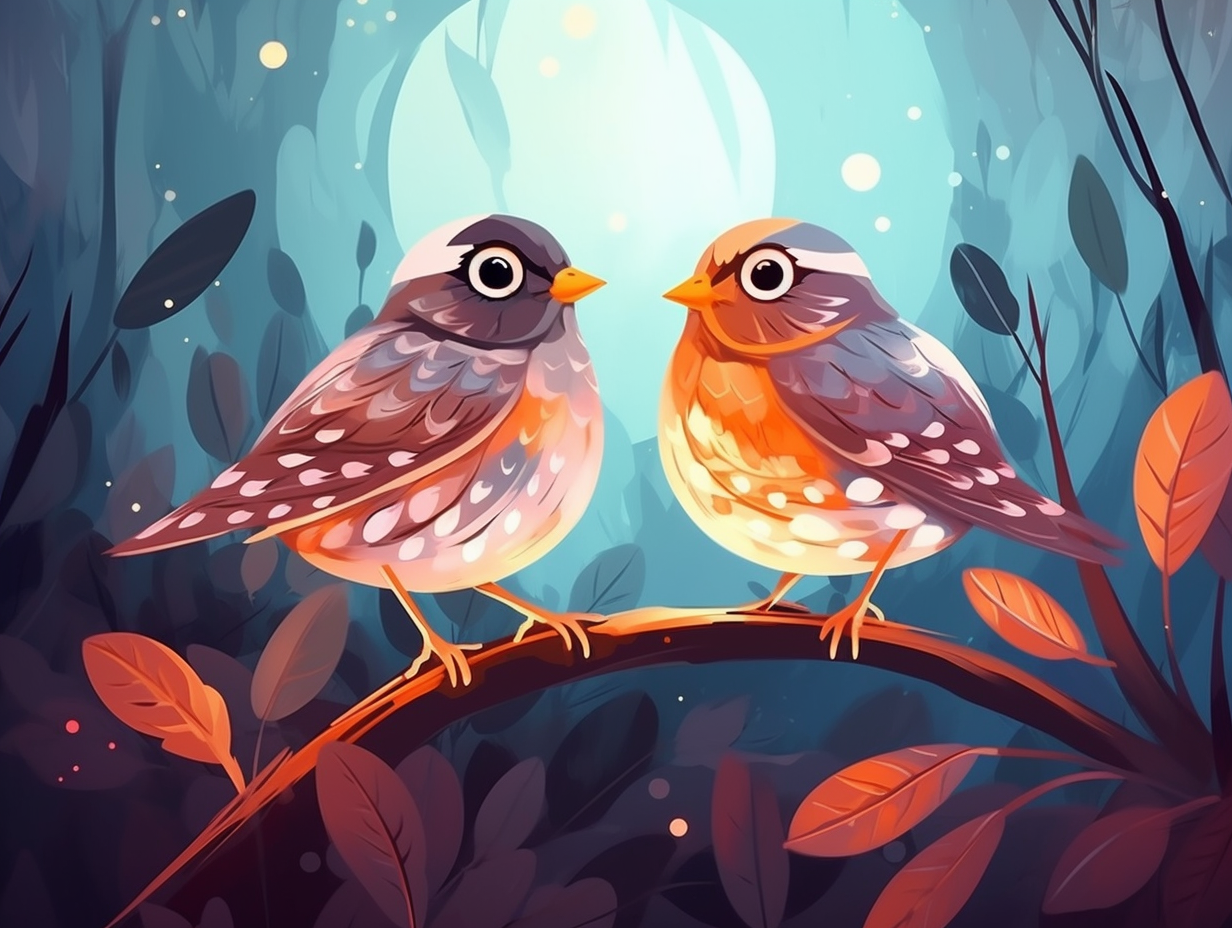
10. The Manakin's Violin-Wing Serenade
In an avian orchestra only nature could compose, the club-winged manakin plays the tiniest violin with its wings to woo its feathered femme fatales: The male of the species generates a unique humming sound by vibrating specially adapted feathers on each wing at over 100 cycles per second, a result of sexual selection that makes them more attractive to females in the highlands of Ecuador and Colombia.
Source => news.cornell.edu
11. Bearded Vulture: Bone Marrow Connoisseur
Feeling rusty and bone-tired? Say hello to the bearded vulture, the ultimate hipster of the bird world, rocking an intentionally dyed beard and dining primarily on bone marrow delicacies: With an impressive wingspan of up to 2.7m (8.9ft) and a penchant for soaring on thermal currents without flapping, bearded vultures consume up to 85% of bone marrow in their diet and fancifully paint their snow-white neck, shoulder, and chest feathers with iron oxide-rich soils or water, turning them a trendy rusty red – the reasons for which still have scientists scratching their heads and debating whether it's a matter of fashion or function.
Source => earthtouchnews.com
12. Octopus Seagull Surprise
In a shocking marine rendition of David and Goliath with a twist, the eight-armed underdog triumphed in an aerial ambush: A Great Pacific octopus was spotted snagging a seagull for dinner in Victoria, B.C. by amateur photographer Ginger Morneau, proving that when it comes to birds and cephalopods, the tables can indeed be turned.
Source => cbc.ca
13. Ostriches: Real-Life Roadrunners
Step aside, Speedy Gonzales: ostriches are the roadrunners of reality, reaching ground-breaking speeds of up to 43 miles per hour, leaving all other birds in a cloud of dust. Alas, they still can't give a horse a run for its money, as our galloping friends can bolt up to a whopping 55 miles per hour.
Source => birdinformer.com
14. Deep-Diving Puffins
As if they were auditioning for an avian edition of "Baywatch," these little-black-and-white-feathered lifeguards plunge into the ocean depths with grace: Puffins showcase their exceptional swimming and diving talents by plummeting 200 feet deep and holding their breath for a whole minute, all in the name of hunting down tasty sand eels and herring.
Source => kids.nationalgeographic.com
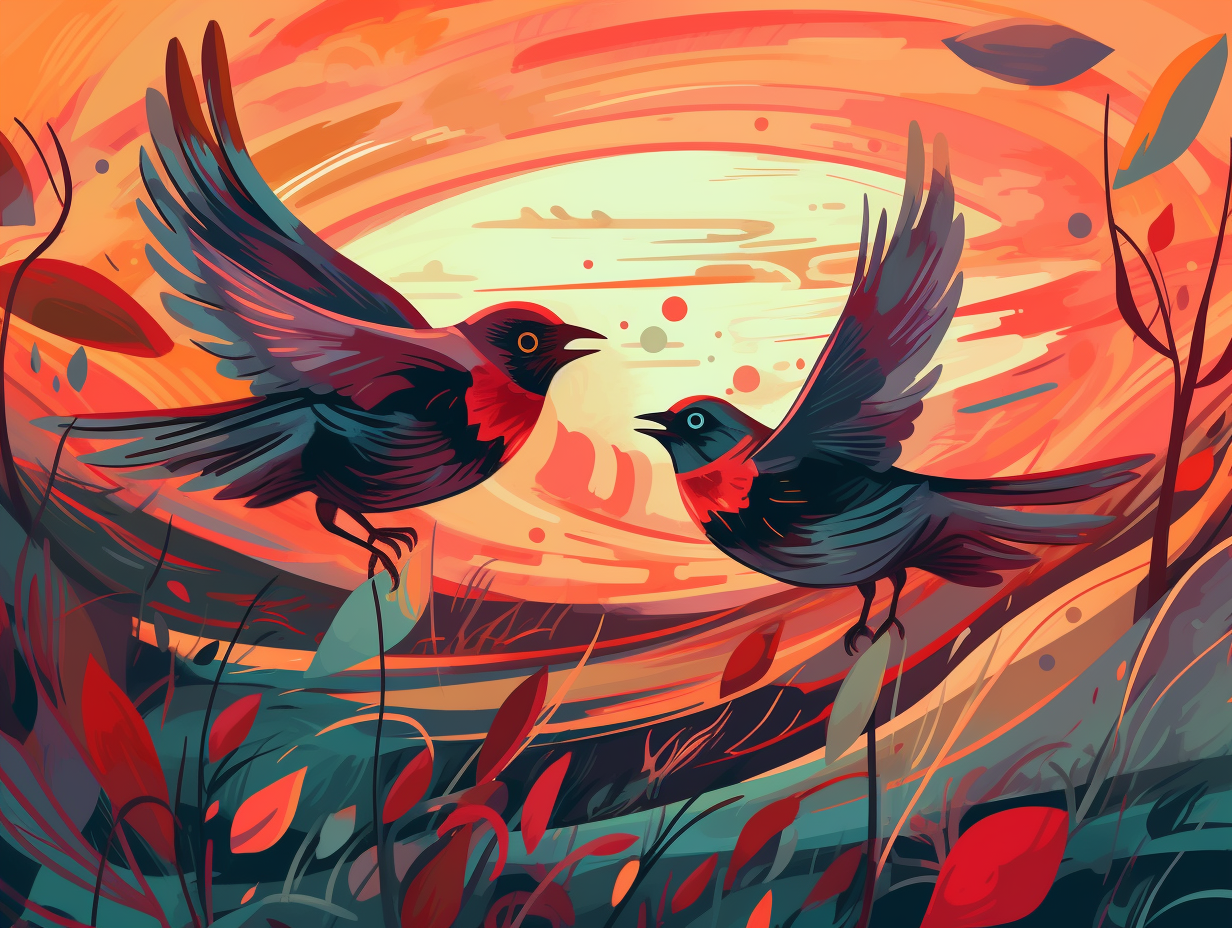
15. Peregrine Falcon: Ultimate Speed Demon
Ever wondered who would win a race between a fearless falcon, a speeding bullet, and Superman himself? Place your bets, ladies and gentlemen, for we have a clear winner in the avian world– and it's truly a bird of a feather: The Peregrine Falcon boasts of being the literal speed demon of the skies, reaching velocities up to 240 mph with its drag-reducing, streamlined feathers, robust chest muscles, and lightweight hollow bones – but only when it's diving in for the kill. However, when it comes to casual, non-lethal flybys, the Common Swift takes the trophy with a steady cruising speed of 69 mph.
Source => birdinformer.com
16. Hummingbird Fashionistas
Hummingbirds: the ultimate feathered fashionistas who take their grooming routine to the next level, complete with preening parades and sunbathing soirees! The serious reveal: These petite aerial acrobats meticulously maintain their feathers using their bills and claws while sourcing oil from a gland near their tail, and they sunbathe by fluffing their feathers and strategically spreading their neck, tail, and wings – not for tanning purposes but for drying their plumage and evicting pesky parasites and excess oil.
Source => journeynorth.org
17. The Common Swift's Endless Flight
Why did the swift ignore the "Land Here!" sign? Because it's a skyward superhero capable of near-endless flying marathons: Common swifts can spend up to 10 months airborne, effortlessly handling feeding, mating, and nest gathering mid-flight while only occasionally touching down to rest or nest on boxes, branches, or houses.
Source => nationalgeographic.com
18. Globe-trotting Godwits
Need a travel buddy who flies with you through every storm without stopping for pit stops and snack breaks? Meet the ultimate globetrotter, the Bar-tailed godwit: This avian marvel can fly over 7,000 miles nonstop from southern Alaska to New Zealand in just eight to ten days, braving pounding rain, high winds, and other dangers without taking a single break.
Source => nytimes.com
19. Leave Hooded Plovers' Magical Nests Alone!
While hooded plovers might sound like a trendy new cloak-wearing species straight out of a Harry Potter book, strutting their stuff on magical beaches: these fascinating little birds really do prefer sprinting their way along sandy shores instead of flying, laying eggs in precarious sand pockets with an incubation period lasting 26-28 days, so precarious that Parks Victoria employs special efforts for their conservation.
Source => southernoceanblog.com
20. Northern Mockingbird: Spotify of the Skies
The Northern Mockingbird: a one-bird party and the original alarm clock of the skies, playing more hits than your Spotify playlist! The serious reveal: This talented avian maestro can impersonate the sounds of up to 200 different species of birds, dogs barking, musical instruments, and even sirens, all while showcasing a vast, ever-changing array of unique melodies.
Source => nwf.org
21. Great Horned Owls: Head-Turning Hunters
Who needs a spinning office chair when you're a Great Horned Owl? A swiveling neck-cessity: These sharp-sighted avians can't move their eyeballs in their sockets, so they compensate by rotating their heads up to 270 degrees in either direction to scope out their surroundings - making them one head-turning and efficient hunting machine.
Source => nationalgeographic.com
22. Magnificent Frigatebirds: Sky Buccaneers
Ahoy, me hearties! Are ye ready for the story of the most swashbuckling buccaneers of the skies? Scourge of the avian seven seas, they plunder their loot on the wing, swooping down on their unsuspecting prey like the most daring of pirates: Enter the Magnificent Frigatebirds, aerial pirates who steal food from other birds in mid-flight, making use of their forked tails to glide effortlessly through tropical breezes. Found in warmer climes of southern United States, Mexico, and the Caribbean, these airborne marauders take to the skies late in the afternoon, when winds and thermals offer them the best opportunity to pillage unsuspecting seabirds for their mid-flight feasts.
Source => allaboutbirds.org
23. Penguins: Feast, Molt, and Fabulous
Holy mackerel, these penguins are going for that extra layer of blubber before their ultimate makeover! It's like the feathery equivalent of binge-watching your favorite TV show on a weekend marathon, and then jumping into a month-long gym routine: During their yearly molt, penguins chow down up to 40% of their body weight in fish to grow new feathers, adding around 3-4 extra pounds to their 7-8lbs frame. This feasting extravaganza paves the way for a 6-week feather transformation, where they chill on land and bid farewell to old feathers while rocking their brand-new waterproof attire.
Source => greensborosciencecenter.wordpress.com
24. Albatrosses: Record Breaking Wingspans
If albatrosses had a Tinder profile, it'd surely say, "Swooping into your heart with my record-breaking wingspan and love for long journeys": The wandering albatross boasts the largest wingspan of any bird on the planet, maxing out at a whopping 12.1 feet. Unconfirmed rumors suggest wingspans up to 17 feet, 5 inches, but either way, these sky-surfing sweethearts log an incredible 75,000 miles per year without breaking a sweat—or even needing to flap their wings much!
Source => a-z-animals.com
25. Bowerbirds: Master Thieving Artists
Move over, Picasso! The male Satin Bowerbirds of Australia have devised their own unique art form, pilfering materials from their neighbors for use in their love nest installations: The sly plunderers prefer snatching blue plastic bottletops and Crimson Rosella tail feathers, which reflect higher levels of ultraviolet light, enhancing their courtship displays and increasing their attractiveness to the ladies. The result? A colorful masterpiece that would make even a fine artist green with envy.
Source => researchgate.net
26. Frigatebirds: Snoozing in the Sky
Talk about a power nap: Frigatebirds catch some shut-eye mid-flight, sleeping for only ten seconds a day while soaring the skies! As they circle thermal updrafts to gain altitude, these airborne avians manage to snooze for about one minute every 12 hours, keeping one side of their brain awake to avoid any mid-air mishaps. Electroencephalographs and accelerometers implanted in their skulls by dedicated scientists have given us a bird's eye view into their unique sleep patterns.
Source => audubon.org
Related Fun Facts

